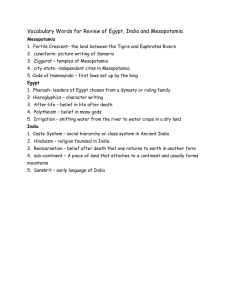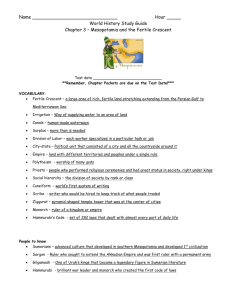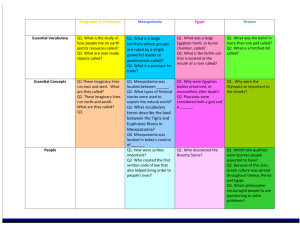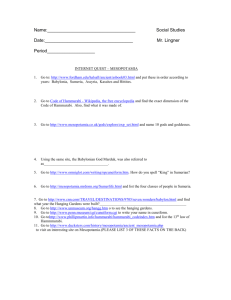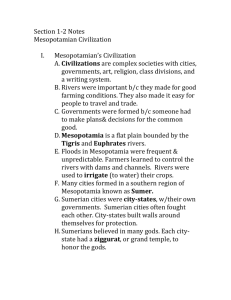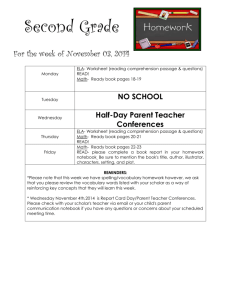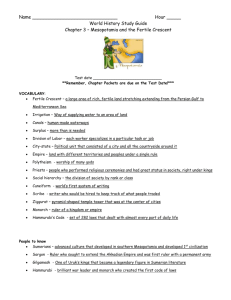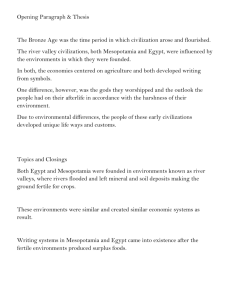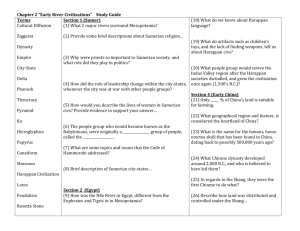Prehistory, Egypt, Mesopotamia Test Review
advertisement
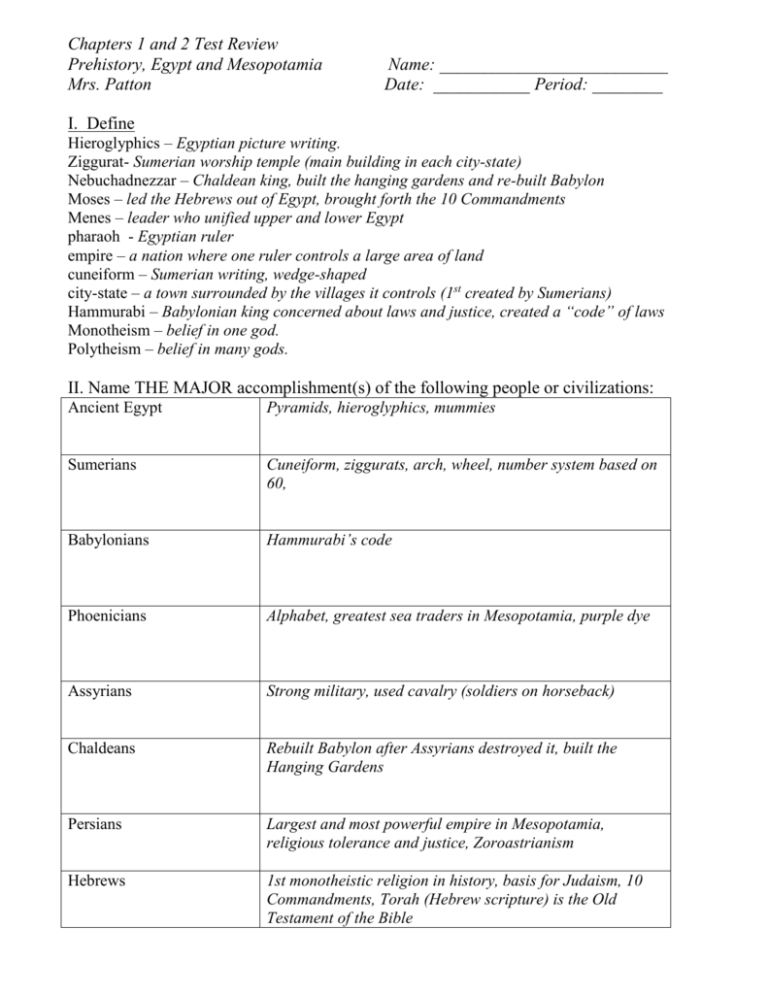
Chapters 1 and 2 Test Review Prehistory, Egypt and Mesopotamia Mrs. Patton Name: __________________________ Date: ___________ Period: ________ I. Define Hieroglyphics – Egyptian picture writing. Ziggurat- Sumerian worship temple (main building in each city-state) Nebuchadnezzar – Chaldean king, built the hanging gardens and re-built Babylon Moses – led the Hebrews out of Egypt, brought forth the 10 Commandments Menes – leader who unified upper and lower Egypt pharaoh - Egyptian ruler empire – a nation where one ruler controls a large area of land cuneiform – Sumerian writing, wedge-shaped city-state – a town surrounded by the villages it controls (1st created by Sumerians) Hammurabi – Babylonian king concerned about laws and justice, created a “code” of laws Monotheism – belief in one god. Polytheism – belief in many gods. II. Name THE MAJOR accomplishment(s) of the following people or civilizations: Ancient Egypt Pyramids, hieroglyphics, mummies Sumerians Cuneiform, ziggurats, arch, wheel, number system based on 60, Babylonians Hammurabi’s code Phoenicians Alphabet, greatest sea traders in Mesopotamia, purple dye Assyrians Strong military, used cavalry (soldiers on horseback) Chaldeans Rebuilt Babylon after Assyrians destroyed it, built the Hanging Gardens Persians Largest and most powerful empire in Mesopotamia, religious tolerance and justice, Zoroastrianism Hebrews 1st monotheistic religion in history, basis for Judaism, 10 Commandments, Torah (Hebrew scripture) is the Old Testament of the Bible III. Answer the following questions: 1. What is the difference between Pre-history and History? There was no evidence of WRITING in pre-history. History is the record of written events. 2. What do the first four civilizations (Egypt, Mesopotamia, India, China) all have in common? They developed in river valleys 3. What role did the pharaoh have in ancient Egypt? They were both political leaders (rulers) and religious leaders (gods) 4. What was main reason that the Nile River was so important to the Egyptians? It provided much-needed water for survival, farming, trade, travel, and protection 5. Explain what the “gift of the Nile “is. The annual flooding of the river left behind rich SILT, or fertile soil that was beneficial in growing crops. 6. What did the Egyptians use pyramids for? Tombs to honor dead pharaohs. 7. Where did the oldest continuous civilization begin? Mesopotamia 8. The Fertile Crescent civilizations started by what two river valleys? Tigris and Euphrates 9. How did Egyptian and Sumerian writing differ? Egyptians wrote in hieroglyphics, which used pictures to stand for objects, sounds, and ideas; they wrote on papyrus. Sumerians wrote in cuneiform, which were wedge-shaped design; they wrote on clay tablets. 10. What type of religion was most common in Mesopotamia? Which group of people were different? Polytheism. The Hebrews were monotheistic. 11. What is most important to remember about Hammurabi’s Code? 1st written code of laws What was the purpose of the code? To let all people know the laws and punishments. 12. Why is the Phoenician alphabet so important? It is the basis for our alphabet today. 13. What is Zoroastrianism and what choice did it force the people of Persia to make? Persian religion that forced people to choose between good and evil

